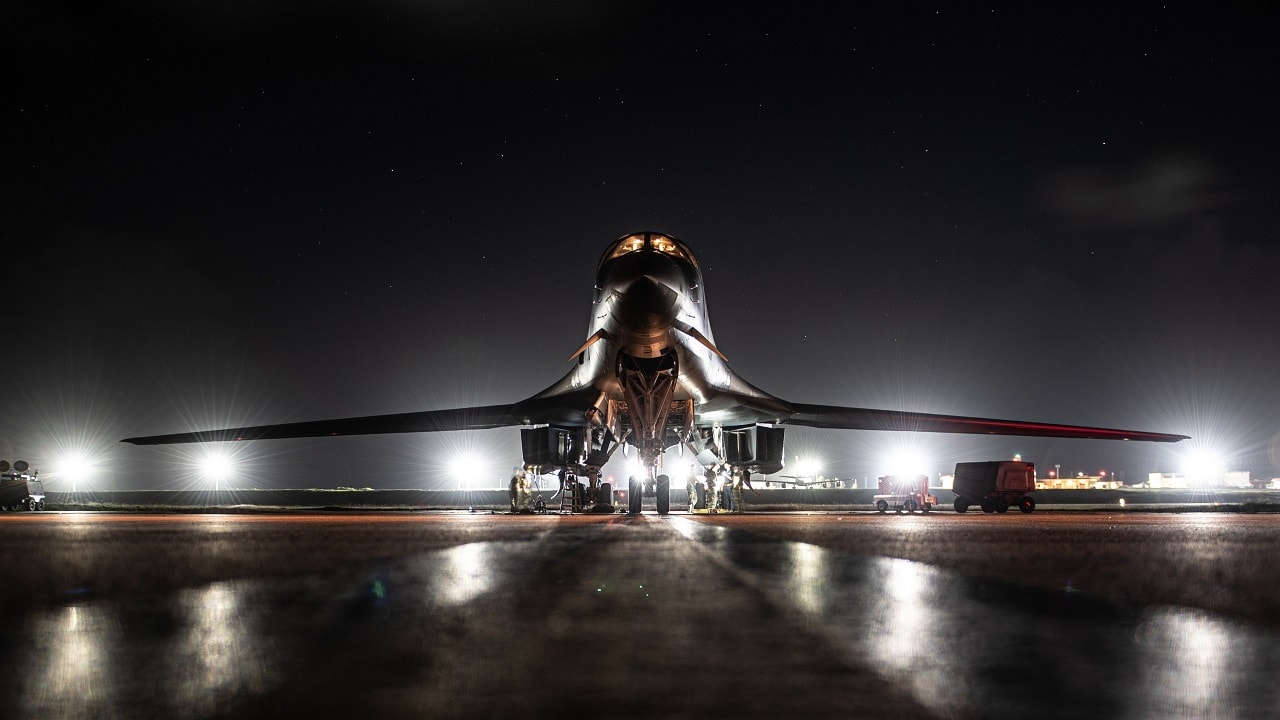The Rockwell B-1B Lancer remains one of the workhorse bombers of the United States Air Force, and this month, a number of the Cold War bombers were on the move again. Aircraft and crews from the 28th Bomb Wing at Ellsworth Air Force Base (AFB), South Dakota, were deployed to Andersen AFB, Guam, for the second time this year.
B-1B Bomber Rotations
The tasking of the Lancers to Guam followed North Korea’s recent wave of missile launches – the most in one year since Kim Jong Un took power in 2011, including a ballistic missile that was fired over Japan at the beginning of the month. In addition, tensions remain high as China has continued to rattle sabers over the sovereignty of Taiwan. Beijing has pledged solidarity with Russia over its eight-month war in Ukraine, and there are concerns China could see it as an opportunity to move against the self-governing island.
While deployed to Guam, the bomber crews will reportedly participate in several training missions with regional allies.
Earlier this year, four B-1Bs had been deployed to Andersen AFB, and took part in missions with the Japan Air Self-Defense Force and a hot-pit refueling operation with the Royal Australian Air Force at RAAF Base Darwin, Australia; a B-1B Lancer first.
“Bomber Task Force deployments and missions provide key assurances and cooperation with joint and partner allies in the region,” said Lt. Col. Daniel Mount, 37th Bomb Squadron director of operations. “The B-1 is an especially capable platform in this region, being able to travel large distances and bear significant firepower with precision and standoff munitions.”
The Air Force did not announce how many of the bombers – known among their crews as the “Bone” from its designation “B-One” – were sent back to Guam, or how long the deployment will last. However, these missions continue to support the 2018 National Defense Strategy objectives of strategic predictability and operational unpredictability, enabling strategic bombers to operate forward from a broad array of overseas and continental U.S. locations with greater operational resilience.
Task Force MineX
This week the B-1B Lancers also integrated with U.S. Naval forces over the Indo-Pacific region to conduct a naval mine exercise (MineX) during the Bomber Task Force mission. The exercise highlighted the Joint Force lethality and was meant to deter aggression in the Indo-Pacific by demonstrating the Air Force’s ability to operate anywhere in the world at any time.
A team of 28th Munitions Squadron weapons loaders worked with U.S. Navy sailors from the Navy Munitions Command, Pacific Unit, Guam, and armed the B-1B Lancers with twenty-one Mark-62 Quickstrike mines, weighing 500 pounds each.
The Quickstrike is a family of shallow-water, aircraft-laid mines used against surface and subsurface craft, and provide a low-cost battle space shaping and force protection capability.
“MineX missions require close coordination and integration between the Navy and the Air Force,” said U.S. Air Force Col. Chris McConnell, 37th Bomb Squadron commander. “As one of the aircraft capable of releasing mines, we have to work with our Navy partners to understand where those munitions need to be placed to meet the desired objectives.”
B-1B Photos
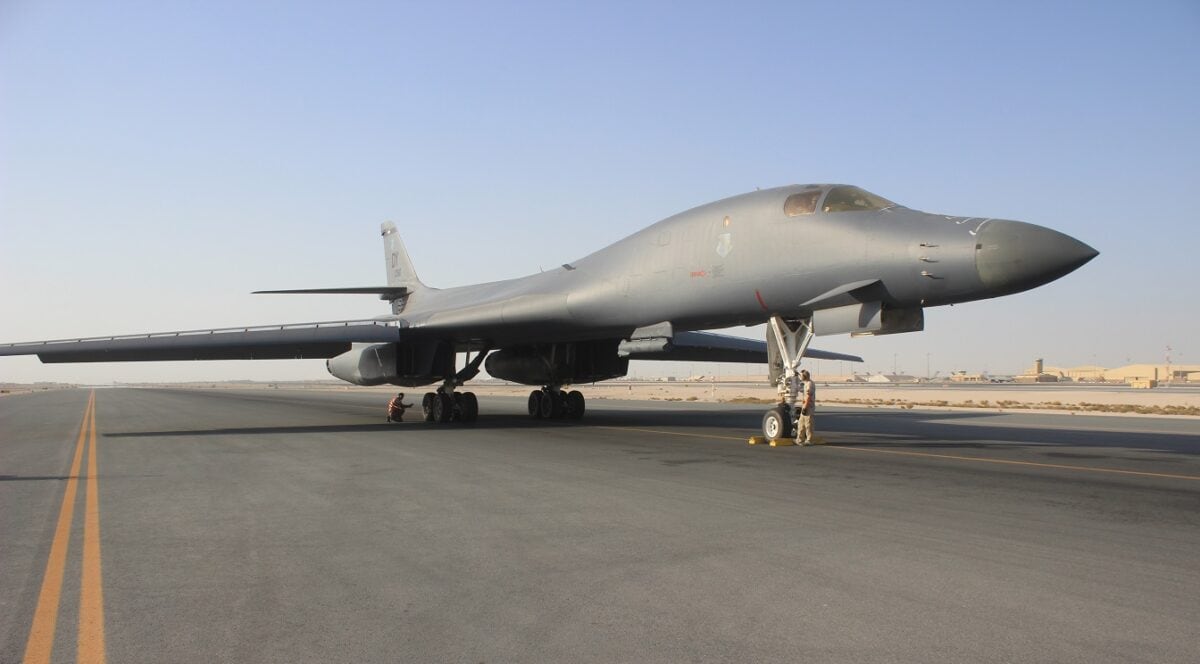
U.S. Air Force maintainers from Ellsworth Air Force Base, South Dakota, work 24/7 servicing and inspecting the B-1B Lancer. They are maintainers within the 379th Air Expeditionary Wing’s 34th Expeditionary Aircraft Maintenance Unit (nicknamed “the backbone of the bone”) and provide hundreds of thousands of manpower hours during six month deployments to Al Udeid Air Base, Qatar. Maintainers comprise approximately a dozen different career specialties to ensure the aircraft flies and meets mission throughout the Middle East. The Lancer carries the largest conventional payload of guided and unguided weapons in the Air Force inventory.
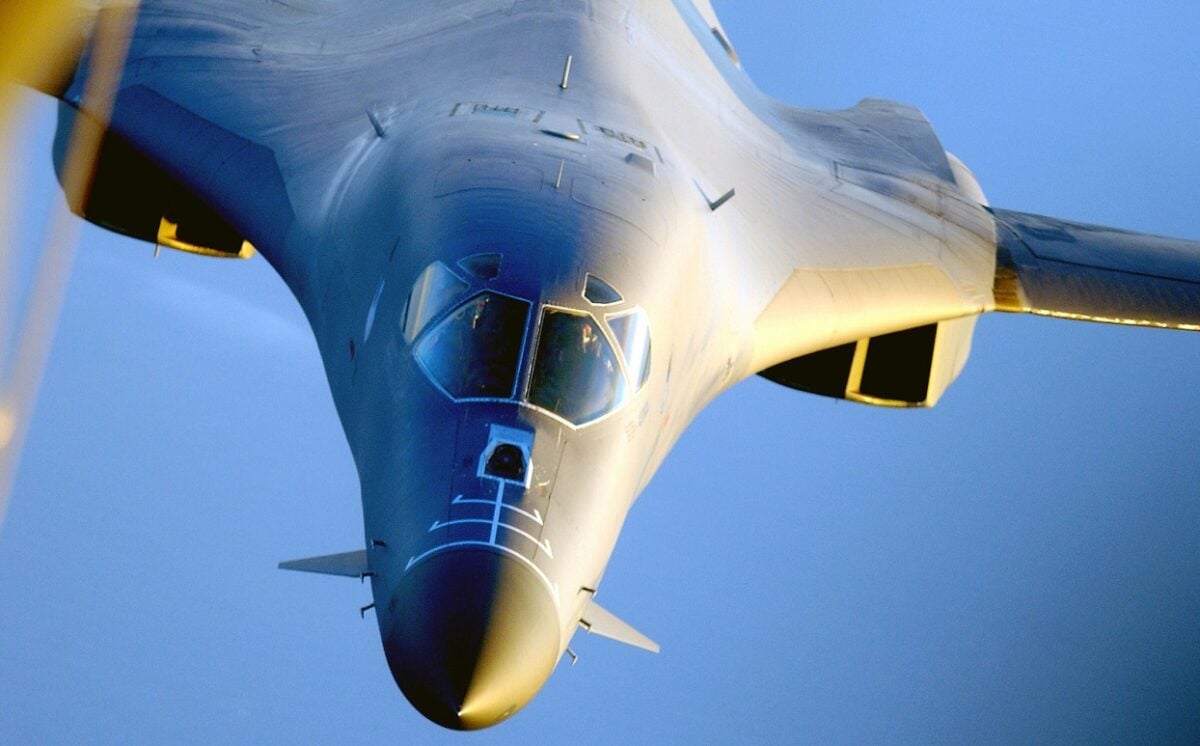
A B-1B Lancer from the 28th Air Expeditionary Wing (EW), maneuvers to receive fuel while on a bombing mission, in support of Operation ENDURING FREEDOM.
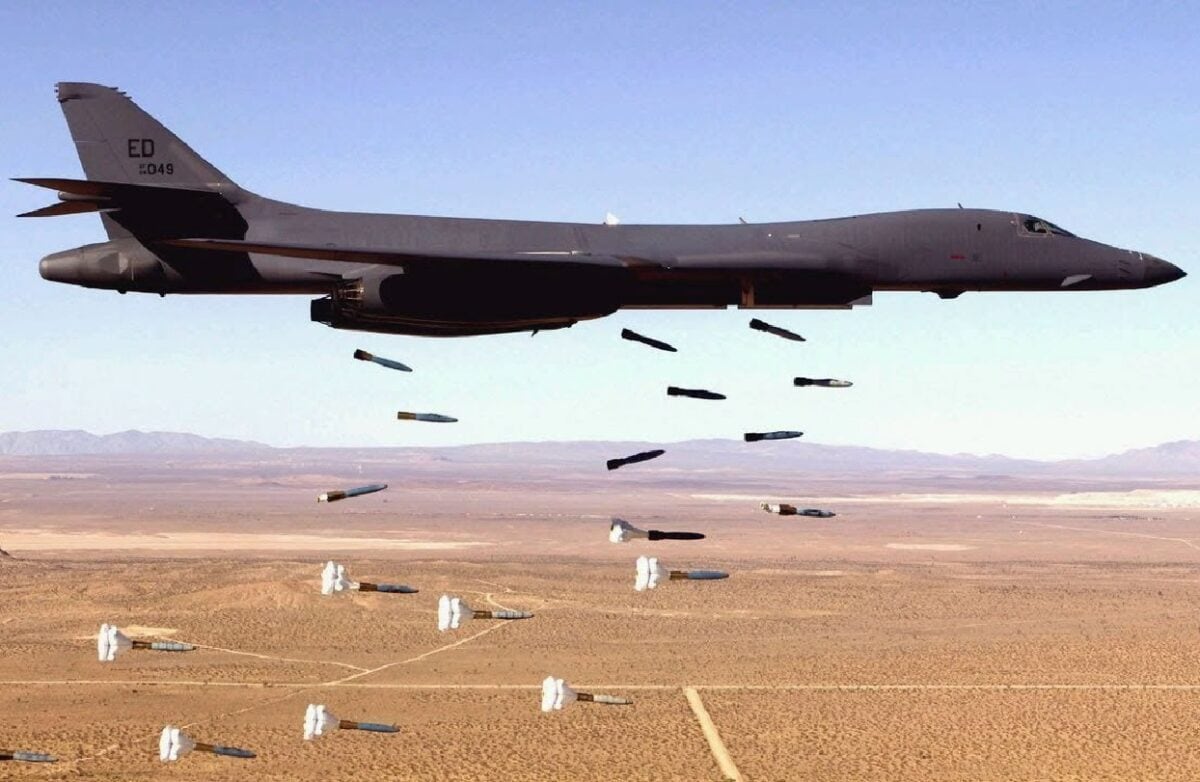
Image: Creative Commons.
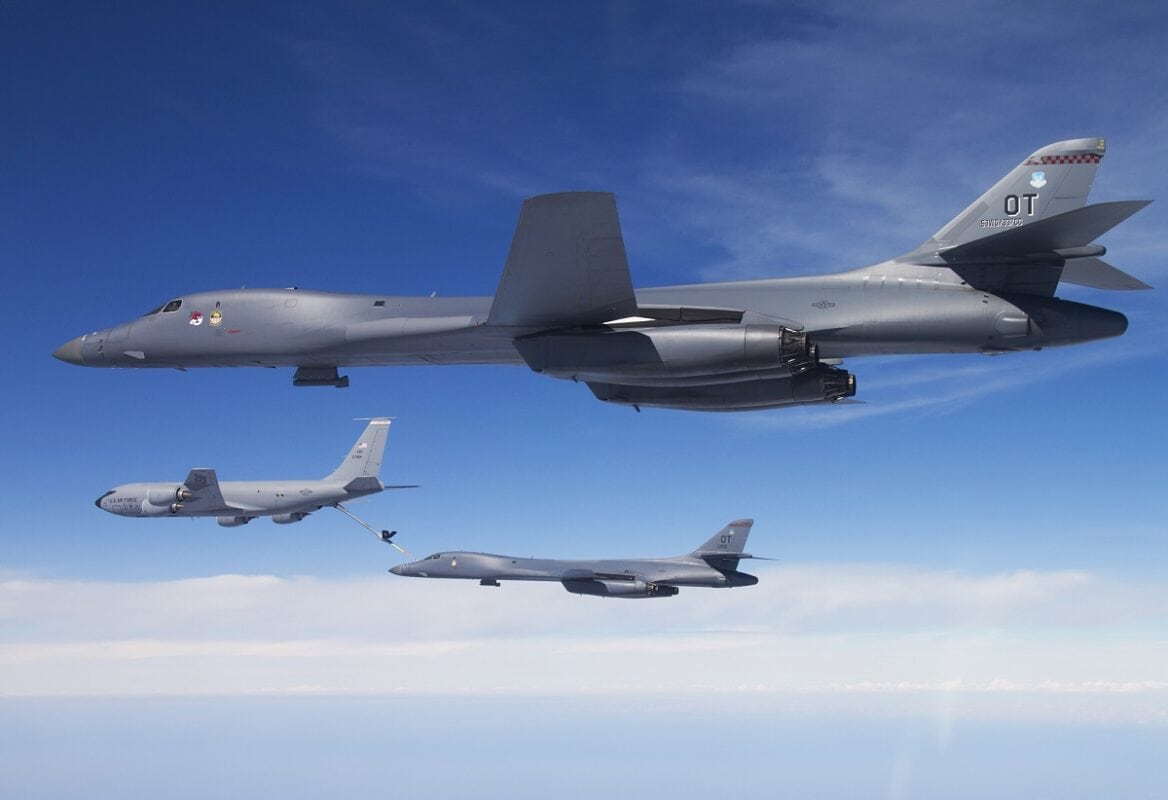
B-1B Lancer from the 337th Test and Evaluation Squadron stands by as another Lancer connects with a KC-135 Stratotanker for inflight refueling during a mission over the Gulf of Mexico near Eglin Air Force Base, Fla., Feb. 23, 2012. The 337th TES is a geographically separated unit of the 53rd Wing, which is headquartered at Eglin AFB. The 337th TES is responsible for operational testing of all B-1B defensive and offensive systems and weapons upgrades. (Courtesy photo/Jake Melampy)
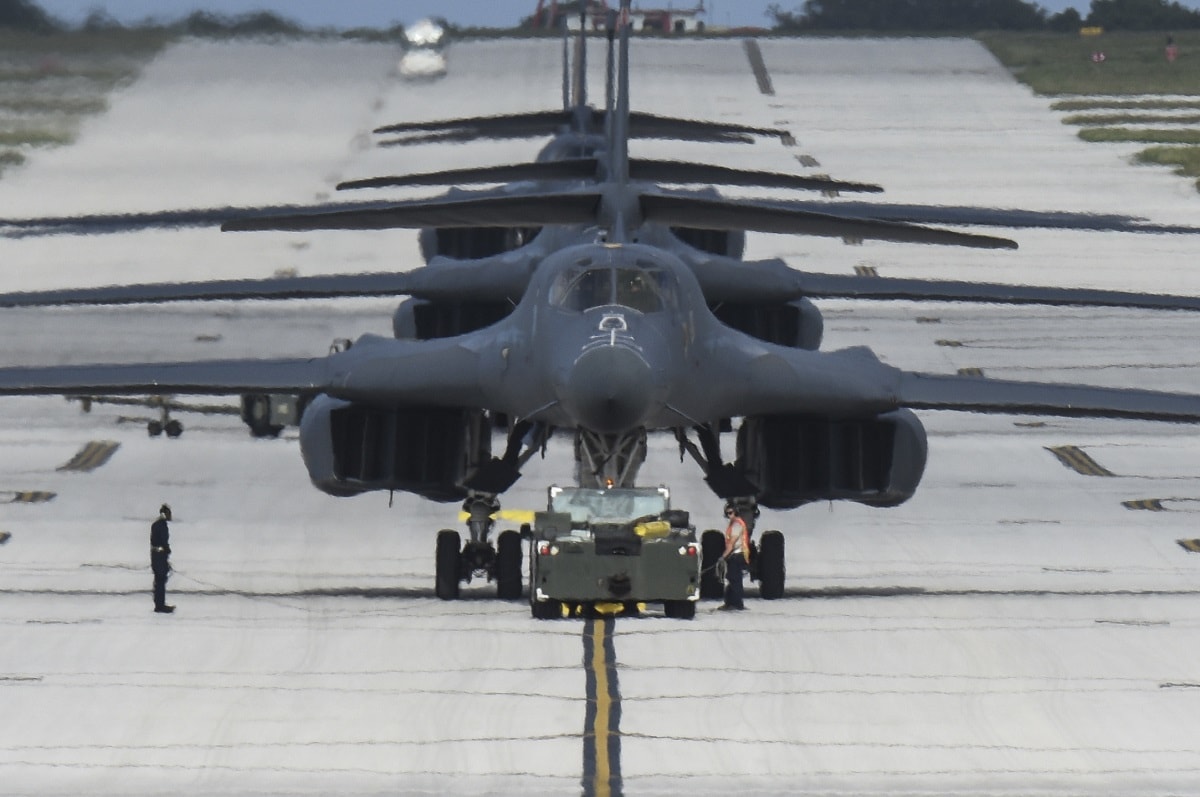
Four U.S. Air Force B-1B Lancers assigned to the 9th Expeditionary Bomb Squadron, deployed from Dyess Air Force Base, Texas, arrive Feb. 6, 2017, at Andersen AFB, Guam. The 9th EBS is taking over U.S. Pacific Command’s Continuous Bomber Presence operations from the 34th EBS, assigned to Ellsworth Air Force Base, S.D. The B-1B’s speed and superior handling characteristics allow it to seamlessly integrate in mixed force packages. These capabilities, when combined with its substantial payload, excellent radar targeting system, long loiter time and survivability, make the B-1B a key element of any joint/composite strike force. While deployed at Guam the B-1Bs will continue conducting flight operations where international law permit. (U.S. Air Force photo by Tech. Sgt. Richard P. Ebensberger/Released)
A Senior Editor for 19FortyFive, Peter Suciu is a Michigan-based writer. He has contributed to more than four dozen magazines, newspapers, and websites with over 3,000 published pieces over a twenty-year career in journalism. He regularly writes about military hardware, firearms history, cybersecurity, and international affairs. Peter is also a Contributing Writer for Forbes. You can follow him on Twitter: @PeterSuciu.

